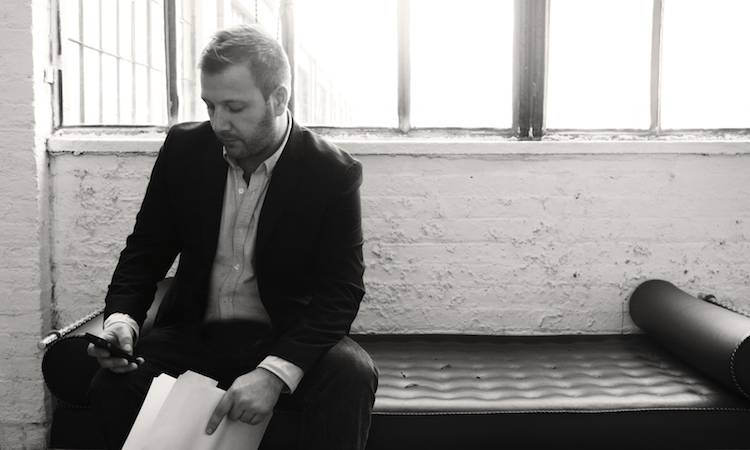
Tony King
Tony is widely regarded as a branding, design and digital expert. As Gucci Group’s eBusiness Design Director, Tony launched the first eCommerce flagships for Gucci, Alexander McQueen, Stella McCartney, Yves Saint Laurent, and Bottega Veneta. The sites launched under Tony’s creative direction at Gucci Group were among the first eCommerce sites in the luxury sector, firmly establishing him as a digital luminary. In 2003 Tony founded Createthe Group, which quickly became the industry leader for fashion and luxury eCommerce, managing the digital presence for many global and luxury brands.
In 2009 Tony left CreatetheGroup and in 2010 started King & Partners, an agency focused on true collaborations with a curated group of exceptional brands. Tony has led King & Partners to evolve from a digital boutique agency into a full-fledged agency with a wide range of offerings including strategy, branding, advertising, design, marketing and end-to-end eCommerce solutions.
In 2016 Tony was named one of WWD’s 10 Most In-Demand Execs in Fashion and eCommerce.
The below interview originally appeared in Surface Magazine, click here to visit.
Tony, prior to launching King & Partners in 2010, you were the e-business design director of Gucci Group and after that ran the agency Create the Group, working at the forefront of what we now call “e-commerce.” When did you start thinking about e-commerce as a viable enterprise?
Tony King: My background is graphic design, but I’ve always paired technology with it. Even in the early days, when I was designing multimedia kiosks and CD-ROMs, and then, when the internet started, I was trying to figure out how I could use technology to solve problems. Graphic design is about solving problems with design, but technology enables you to do that to an even greater degree. “Digital” wasn’t even a word that was used then—we’re talking the early ’90s. There weren’t too many companies combining great technology and great creative.
At Gucci Group, did you view yourself as a tech evangelist of sorts?
King: Completely. There were a few people inside Gucci Group who understood what was coming, and reached out to me and put me in a position to help get Gucci lined up and ready to launch a real website and start selling online. It was very much an uphill struggle. The biggest hurdle was having the brands understand this was not going to cannibalize the store sales.
We had plenty of heated debates as to whether or not the internet was “below brand.” That was a thing that I heard all the time: ”The internet’s below brand.” Then they gave me a small budget to test e-commerce. We designed the site, had someone program it—nothing was hooked up. We didn’t have any budget for a proper team. An order would come in, and I’d run downstairs to see if we had the product. If we had it, we would run the order. We pitched it as online personal shopping. The business model worked, so we applied it to Bottega Veneta and some of the other Gucci Group brands. Now they make lots and lots of money this way.
King: We started working together fourteen years ago. This was after Gucci Group. I had started an agency called Create the Group, which grew to two hundred people with offices in Milan, London, and New York. Our clients included Gucci, Marc Jacobs, Fendi, Bulgari, Stella McCartney, Balenciaga, Topshop, and Theory. While there, we came up with the idea for Nowness and launched it. In time, the scale of the thing weighed so much on me that I left. It just wasn’t fun or creative anymore. And then a few years later it collapsed.
During that time, I learned what doesn’t work and what I don’t want to do. I now know I don’t want to have two hundred people working for me, and I don’t want to have only fashion clients. I want to have a range of clients and run a smaller, more personal company.
Kim: When I joined Create the Group, there were twelve people. It grew really quickly. It was a fun, wild ride. We didn’t have much competition, but we were really just busy catering to all these big luxury brands’ demands. It wasn’t fun. When Tony left, I went with him.
How did you break out of fashion clients only and into these other realms you’re in now—real estate, hospitality, lifestyle—when you launched King & Partners?
King: When we started the office, Inii and I knew we were going to have lots of fashion clients. But we were careful to balance it out—first with hospitality, and then real estate. Once we got those, we knew we could get a wide range of clients. We even do food now—we recently launched some work for a large sushi restaurant client. And we’ve gotten into editorial with the design of the SurfaceMag.com website.
Which clients are exemplars of the King & Partners brand and approach?
King: Faena is a really good example. When we met their team, initially the ask was something fairly small: one website for Faena House. We engaged with them really nicely, and they trusted us. We ended up doing probably six or seven websites for them, and lots of content strategy and brand strategy. We worked with them for about five years.
Another one is 3.1 Phillip Lim. We met them at quite a pivotal time in their business. When they came in to see us, they hadn’t done much online. They had a nontransactional flash website. We completely relaunched their online business. We spoke to them every day for around four years.
It seems like, with King & Partners, you’ve expanded far outside of digital design, too, to become more of a full service experiential agency.
King: We’re quite an odd company. Even though we’re doing all of this creative stuff, we’re still doing a lot of e-commerce, and running e-commerce sites for our clients, too. I can’t think of another company on earth that’s currently doing [such a] wide of a set of offerings: branding and content and art direction, all the way through to day-to-day merchandising and running websites. The cool thing about this, I think, is the fact that we’re very focused on conversion and actually making money for our clients. We’re fully aware of how things are selling or not and any other problems. We’re a conversion-focused agency.
What size is the King & Partners staff now?
King: Thirty beautiful people.
Is this a dream scenario or…?
King: No, I want to get a little bit bigger. Fifty would be the max. It’s incredible what you can do with a small number of people now. No one needs these giant companies anymore. I think that’s one thing that people like about us: We’re not Accenture. We’re also a lot cheaper than Accenture. You come in here, and we can do everything impeccably and with passion.
How would you describe the working relationship between you two? What are your exact roles?
King: We’re both creative directors. I happen to to be the CEO, too. We tend to split work up. I try to balance running a company while staying creative as well. I make sure I’m involved on my own projects, coming up with ideas, sketching things out, sitting with designers and technologists, just making sure things are running in the right direction. Inii does the same on her side.
Does your studio have an organizational mantra?
King: We’re always telling people to communicate very transparently, clearly, and simply. I think a lot of communication turns into business talk. People just say extra-long words for the sake of it. If you’re clear and simple and honest, it’s a better result at the end of the day.
How do you view your respective personal tastes, and do you find that they’re reflected in the company?
King: One hundred percent. When you’re trying to get a company to choose you over five other agencies, you can’t say it’s just because of taste, but honestly, I think it should be about taste. Inii and I have very good taste, and no one else does. [Laughs]
Kim: Taste, I think, is all about proportion and balance.
Tony, I know you’re personally obsessed with Porsches. Inii, what’s your fixation?
Kim: Nature and plants. Things that are not very mechanical.
Who are some of your respective design icons, living or dead, that you look up to?
King: One of mine would be Tom Hingston, who did a bunch of Massive Attack album covers. I remember, as a teenager and in my twenties, when I used to do a lot of club flyers, just loving the art direction and typography he did. Other art directors I admire include Marc Atlan, Fabien Baron, and George Lois. When it comes to cars, without question, I have to say Pininfarina and Porsche.
Kim: For me, it’s Axel Vervoordt. When I think of the ideal feel I want to have, it’s his interior design. There’s something so not artificial about it—every single thing is so tasteful. There’s nothing that stands out badly.
To me, it seems like you’re both in a bit of a yin-yang situation—you’re opposites in harmony.
King: Sometimes. Other times, we’re identical. We always end up with work we both either love or hate. We never disagree on that. We have similar a taste leve— it just comes from different places.
Kim: We’re both very neat. We always clean up everything immediately. But Tony’s wilder than me. He can push things harder, faster, and better than me.
If you think about us seven years ago, when we started King & Partners, [compared to] now, we’ve changed so much. I used to not speak to anyone. I would just quietly sit at my desk and design. Tony was always out there talking to people and pushing the team. Now my voice has gotten louder. I scream at people sometimes. Tony will be like, “Woah-woah-woah!”
King: She’s the scary one now. [Laughs]
Kim: We influence each other.


